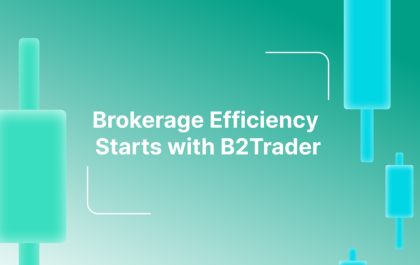When it comes to encapsulating the essence of data visualisation, the old saying a picture is worth a thousand words may come to mind. As we find it easier to identify patterns and spot trends from imagery and pictures than rows of data, it’s no wonder data visualisation has become an invaluable business tool.
In our modern, fast-paced world, data has become an increasingly important business tool. It can help organisations identify patterns and emerging trends, make better, more informed decisions and promote growth and success through data-driven strategies and campaigns. This is why businesses of all kinds are collecting, analysing and storing an increasing amount of data.
The issue with data, of course, is that you need a way in which you can analyse it in order to interpret it. For many businesses, the solution lies in data visualisation.
So what is data visualisation? And how can it assist your business in making sense of your big data?
Table of Contents
What is data visualisation?
As the name suggests, data visualisation is the presentation of data and information using visual aids such as maps, graphs and other compelling imagery.
Data visualisation is one of the key things to think about when integrating business intelligence and analytics solutions into your daily operations. This is because it is much easier to interpret data from a visual aid such as a map or graph than it is from a spreadsheet or text file.
Essentially, large and small organisations alike can unearth trends, patterns and other information that data and statistics alone would not immediately reveal. This is because by converting unprocessed data into a format that is simpler to analyse and draw conclusions from, the process reveals trends and outliers while also minimising distractions and noise. As a result, data visualisation is often compared to storytelling.
Effective data visualisation also requires a delicate balancing act between functionality and making visually compelling imagery. While the most simplistic graph might be too uninteresting to retain anyone’s attention yet still manage to highlight a critical insight, the most eye-catching visualisation may completely fail to do what it needs to. This is why for data visualisation to succeed, the data must work in harmony with the visual components.
Why is data visualisation important?
Making data easier to understand ultimately benefits all organisations, regardless of size, age or niche. This is because patterns can be recognised and comprehended more clearly when imagery is used. As a result, visualisation tools and technologies are essential for the analysis of massive amounts of data and can ensure your business is unearthing the trends and patterns it needs to make fully informed business decisions.
Data visualisation has several benefits for modern businesses but is especially important for organisations collecting large swatches of raw data. By using data visualisation tools like Microsoft Power BI, both large and small businesses can spot industry trends, shifts and emerging patterns. As a result, it can assist organisations in understanding the relevance of the data by simply providing a visual context.
Making sense of big data
Whether they are working remotely or in a centralised office, giving your organisation access to cutting-edge data visualisation tools such as Microsoft Power BI will allow your employees to quickly access the data they need, when they need it. This means they’ll be less chance of your employees making uninformed, spur-of-the-moment judgements in their daily tasks. So, if you’re looking to make sense of your data, data visualisation may be the solution you’ve been looking for. The process can ultimately help a business make informed, data-driven decisions as well as highlight problem areas within organisations that require attention.
Data visualisation also enhances customer interactions and the end-user experience. This is because it can help businesses understand the behaviour of their target market, as well as gain insight into daily business processes, meaning strategies and campaigns can be shaped to the needs and desires of a target audience. Other benefits include the acceleration of response times, gaining real-time access to crucial data and information and of course, the ability to convey new business opportunities and initiatives to crucial stakeholders.
Final thoughts
So what is data visualisation? And how can it assist your business in making sense of your big data?
In recent years, data has become an increasingly important asset for businesses. It has the power to drive decisions and unearths powerful insights that can promote growth and success through data-driven strategies and campaigns. As a result, modern businesses of all shapes and sizes are collecting, analysing and storing an increasing amount of data in an attempt to get ahead of their competitors.
Of course, the problem with data is that it requires analysis before it can be understood. As a result, the concept of data visualisation has evolved dramatically in recent years into a crucial business tool used by organisations of all shapes and sizes. This is because humans instinctively see patterns and identify trends more easily in images and pictures than in rows of data.
At the end of the day, if you’re looking to make sense of your data, data visualisation may be the solution. By converting volumes of data into understandable graphics, data visualisation can streamline the data analytics process – and for reason, it can make data instantly more valuable to decision-makers than lines of text and figures. Its contribution to the modern business world should not be overlooked.
Related posts
Hot Topics
DVD Screensaver
A DVD screensaver is a program that enacts when a blu-ray player is inactive, showing visual substance like movements, slideshows,…
B2Broker Spends $5 Million on B2Trader — The Revolutionary Brokerage Platform
B2Trader: The cryptocurrency market is experiencing an exhilarating period of expansion as Bitcoin reaches record-breaking levels and the overall crypto…



